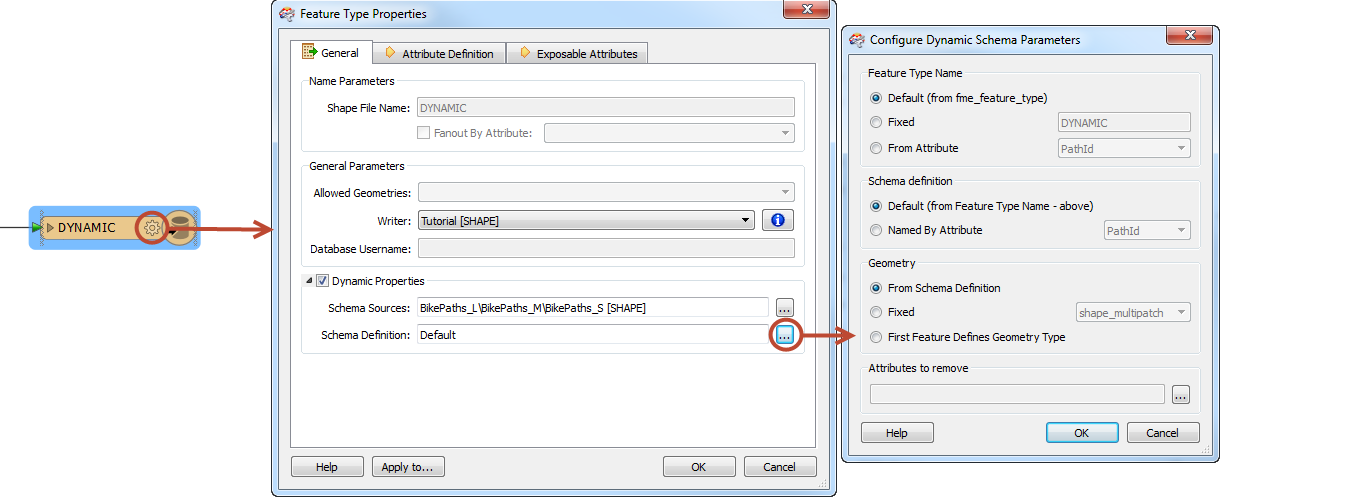
Dynamic workspaces provide maximum translation flexibility and minimize long-term maintenance of workspaces.
Dynamic means that the workspace is set up very simply, but with maximum flexibility. You can read any source dataset (of the chosen format), and it will be read and written (to the destination format) correctly. The important part is that you can change the source to a different dataset, and it will still work.
Traditional FME Workspaces are tightly bound to the source and destination schemas. In many cases, this is what you want. However, in certain situations, the workspace needs to be more independent of the schemas.
A dynamic workspace breaks the dependence on the source and destination schema. Common applications for dynamic workspaces are:
There are a number of components that you could make dynamic in an FME workspace:
Schema: Source Feature Types
A workspace that reads any set of feature types from a source dataset.
This is supported by the Merge Filter.
Schema: Destination Feature Types
A workspace that reads any set of feature types from a source dataset, and writes a corresponding set of feature types.
Schema: Attributes
A workspace that reads any set of attributes on the source feature types and writes them out in the same schema.
Format
A workspace that writes to any format, without the need to add multiple writers.
This is supported by the Generic Writer.
Dynamic schemas are used in conjunction with adding a reader as a resource.
In most cases, you can use the default schema properties of the dynamic writer. However, there are some parameters you can adjust.
To display dynamic schema parameters, open the dynamic writer Feature Type Properties dialog, and click the Browse button beside Schema Definition:

Controls the name of the destination feature type that is written.
Defines how elements in the schema definition of the feature type are named.
Defines how the geometry type of the feature class is derived.
This option allows you to remove attributes from the feature. Enter the names of any attributes you do not want in the destination feature (for example, OBJECTID, SHAPE_Area, and any others).